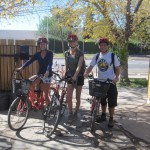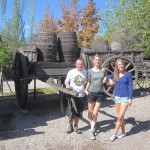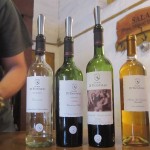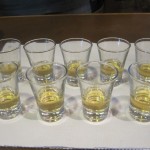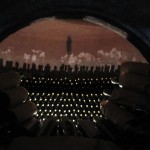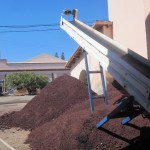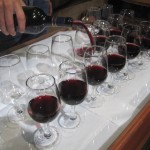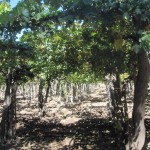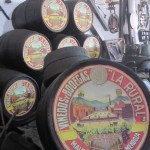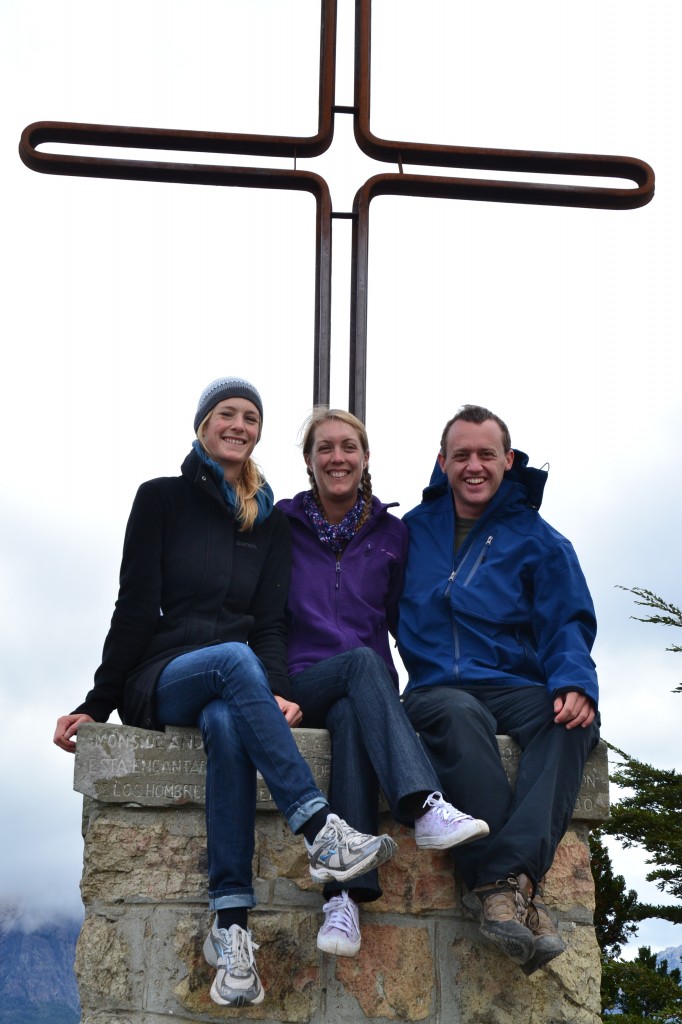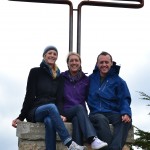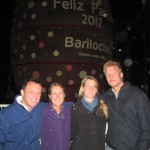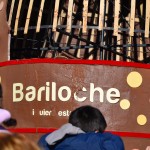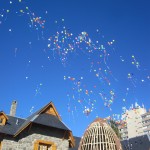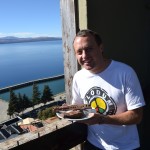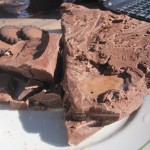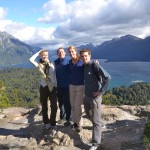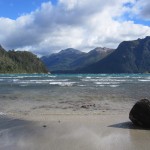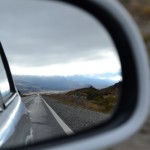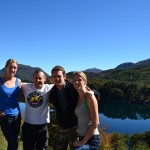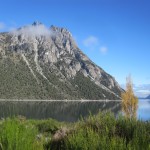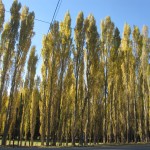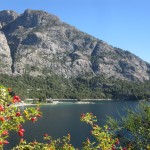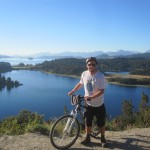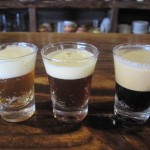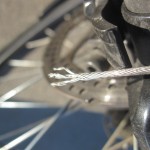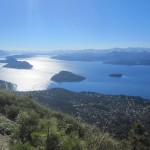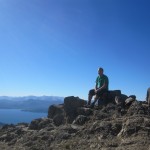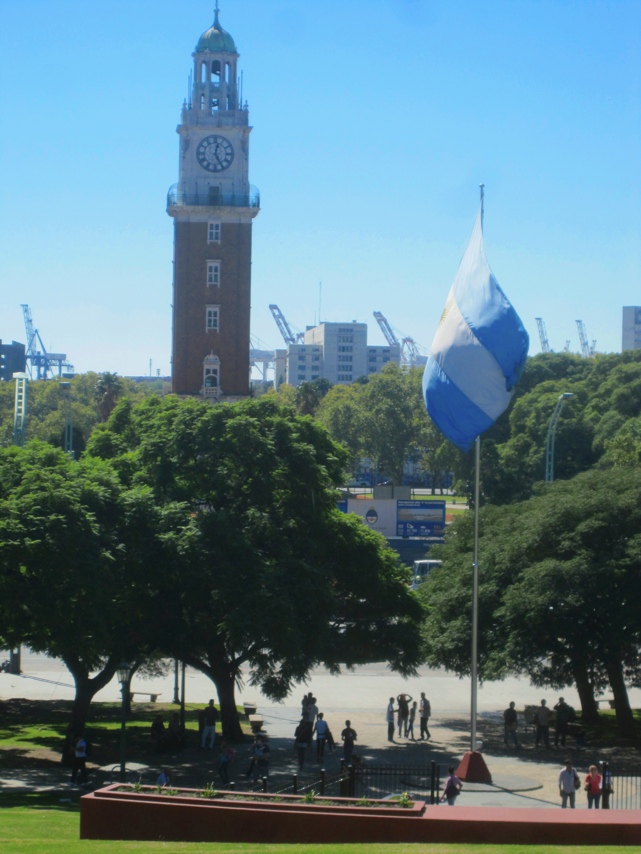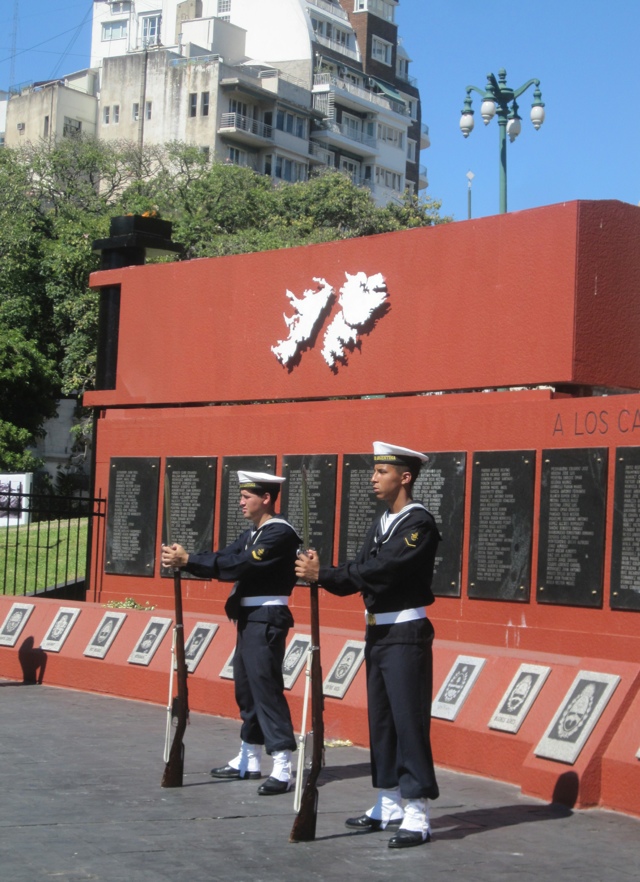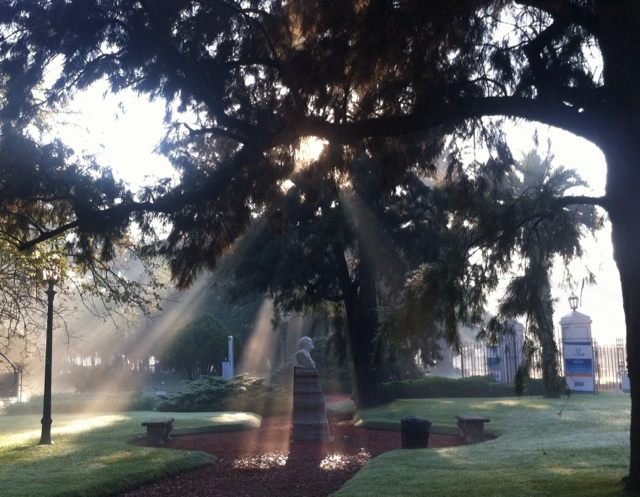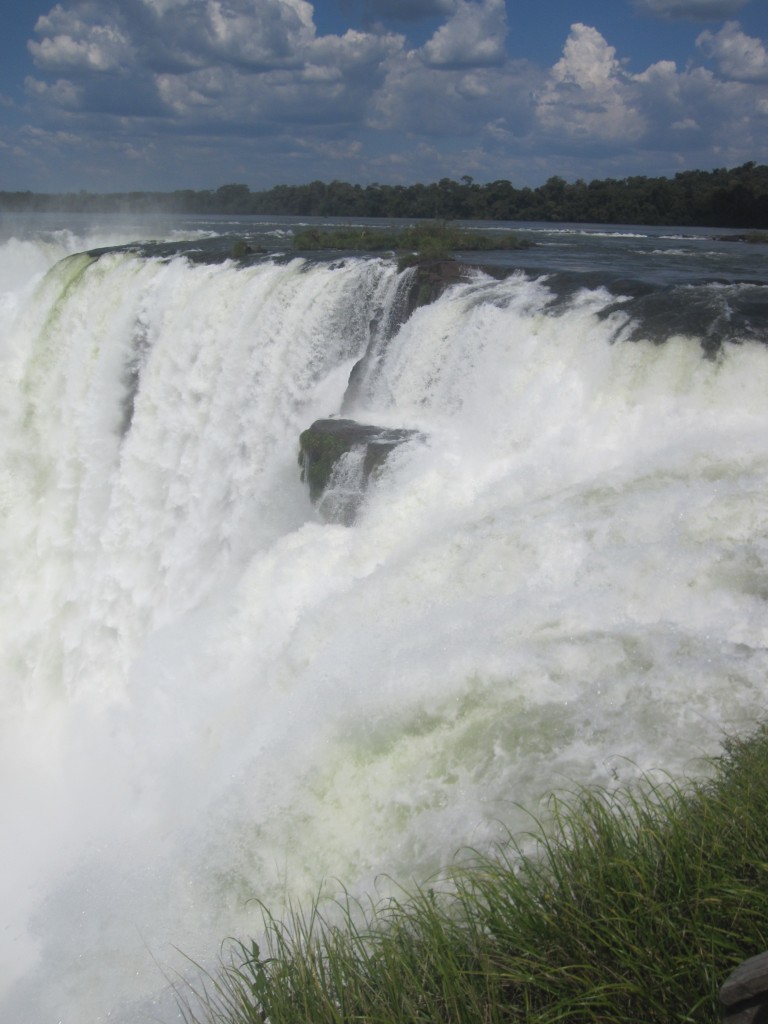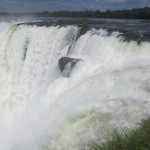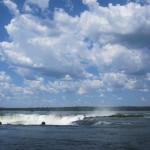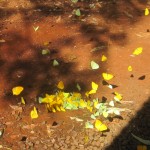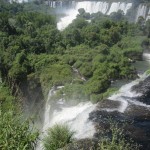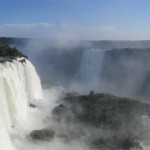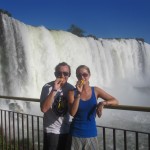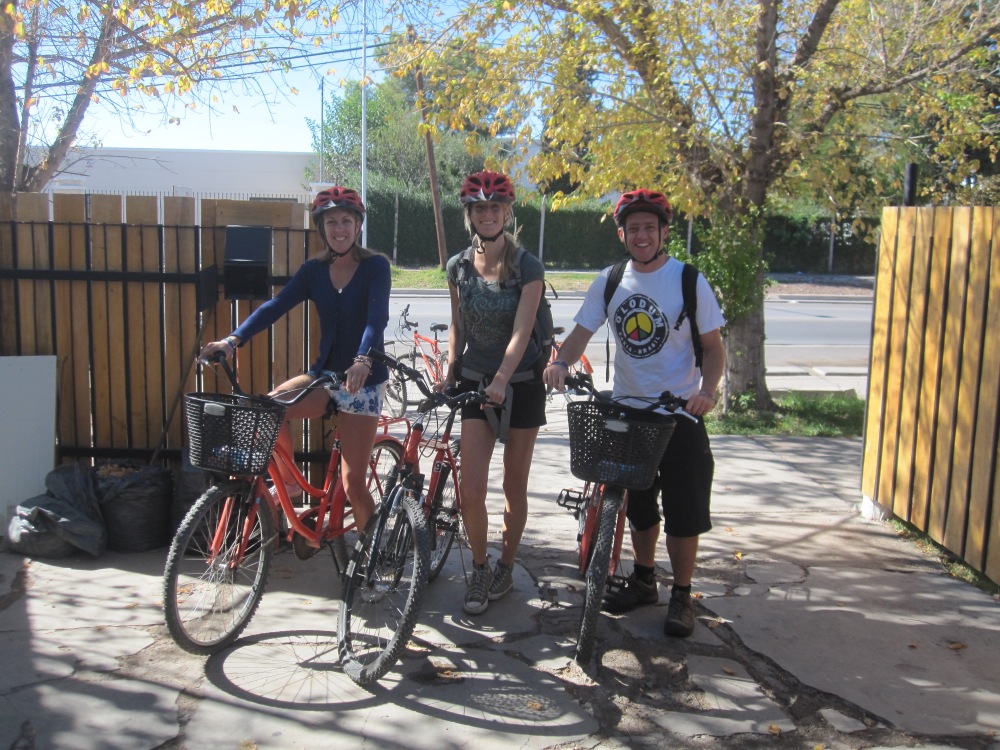
Thanks to our friend Karoline for this title, which sums it up just perfectly! Mendoza is an oasis in the parched flat landscape east of the Andes, where the locals divert the flow of water from the mountains to irrigate the land, producing acres and acres of vineyards. The weather and wine gave us a very good reason to come here!
What better way to soak up the sun (and the wine) than by bike? The three of us spent a great day in the countryside of Maipu sampling the local delicacies and getting a bit of exercise in at the same time. And, in that strange Argentinian way, we were assisted along the way by the tourist police, on hand to help with punctures – and apparently any difficulties arising from the inevitable drunk driving! Those worried for our safety need not; we remain fairly sensible travellers despite the lovely local liquid.
Curiously, every tourist in the area seemed to go for the same bike-hire operation (Mr Chu) – rumour had it the bus driver was being tipped to drop us all off directly outside his place. We instead went for the much less busy Orange Bikes, with good new gear, brand new helmets – and cheaper than the competition at 25 pesos each. Plus, in case we didn’t manage enough during the day out, an invitation to join them in drinking more wine after we got back!
We took in a wine museum, the beautiful Di Tomassi winery (the oldest in the area), and soon got into the routine of touring and tasting. At Di Tomassi, we were shown inside their former brick fermentation tanks, coated with honey wax on the inside, and with sparkling crystals of residue from the process on the ceiling. Next stop, an olive oil producer which was a bit of a disappointment. Everywhere else we went, we were greeted with warmth and open arms; here it felt like we were an unwanted distraction. I persevered and paid for a tasting, hoping to find out more about the tricks of the trade and how it all worked. Sadly, it was not to be as the guy running it just left me with a plate of bread and different olive products and just walked off, wishing me well. I’m still not quite sure what I was trying, but we all took advantage of the poor service to also sample the various bowls of raisins they’d left out on the table. A tasty byproduct of the vineyards!
Our last stop was the smallest bodega, and the best. Originally built in the seventies, the place went bankrupt and was abandoned for many years before being bought and resurrected by a French couple with a passion for wine. Fortunately, while the buildings had been abandoned, the vines themselves had been lovingly maintained by locals who used to work there – and so the new owners were quickly able to start production. While we were getting the tour, we met one of the owners, and got to witness them filling a barrel with wine to ferment. Karoline also got to experience it more closely than expected, as the barrel filled up too quickly, overflowing and spraying wine everywhere – and on her shoes. Fortunately, a bottle of (their) white wine was on hand as the best antidote for the stain! Not only did we all enjoy the wine here, but we were all made to feel so welcome with them almost forgetting to charge us for our tasting – many other places had demanded money from the moment we stepped through the door.
As the sun set, we had a leisurely (and perhaps slightly wobbly) cycle back 12km to our bike hire place – and of course finished the day with one more glass of red. It’s perhaps symbolic of the fact that not everybody is a wine conneseur that the bike hire place brought us a bottle straight from the freezer (yes, of red wine), with ice cubes floating in it. Some might have been horrified; we were just happy to sit back and reflect on a great day out and look forward to another fine bottle of £1 wine to follow for dinner!
Simon

